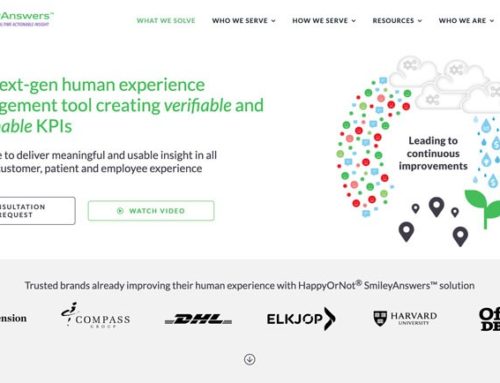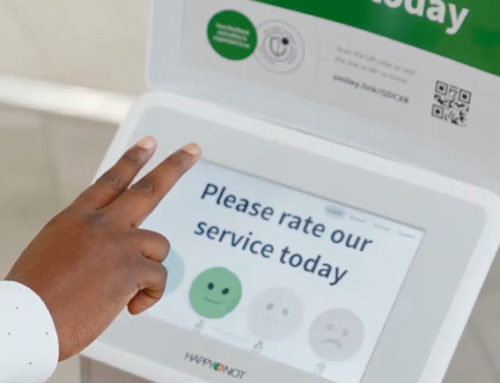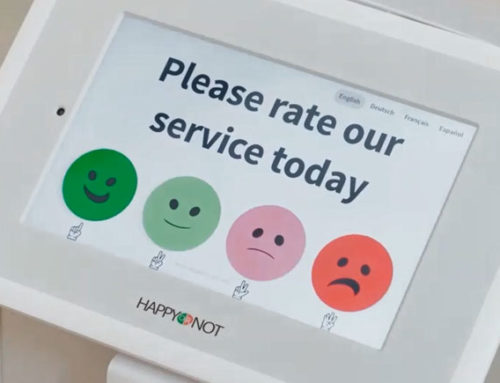As shared earlier this year in Forbes by Heikki Vaananen, a HappyOrNot® founder, retail organizations must put more attention into the customer experience to build and maintain longer term relationships with their customers. With the stress put onto retail businesses with shut downs and government regulations for Covid-19 safety, retail organizations have had to become more creative to reduce the financial strain from this pandemic. Business decisions become more important as a couple bad decisions can lead to a retail operation reducing operations or even shutting down.
Since each retail business has their own challenges as they work through 2021, this post will focus on 5 ideas to improve the human experience in retail. No matter what retail organization you may work with, these ideas get to the basics to help you improve through the rest of 2021 and into next year.
Know and Manage your Touchpoints
A touchpoint is any interaction a person has with an organization. As technology increases and more websites are added to the internet each year, the number of touchpoints automatically increases. As business continues to become more competitive, the cost of acquiring human attention continues to rise. This makes it more important for businesses to better manage all these touchpoints. Losing and attempting to capture new customers is more costly than keeping and building long term relationships with current customers.
Whether you build a customer journey map or use another form of naming all the touchpoints, have a way to understand how your customers experience your business. Customers can experience your business through digital means, physical means, or a combination of both.
Below are a few important digital and physical touchpoints for your review:
Digital:
- Your website
- Social Media channels
- Review sites
- Search
- Forums
- Business Listings
- Online Advertisements
- Mailings
- Physical store appearance
- Employee Interactions
- In store product selection
- Store Hours
- Safety Measures in store
- Pricing at your physical locations
Engage with the 5 Senses
Understanding how we as individuals learn the world around us can help organizations build better human experiences. As shared by neuroscientist Lisa Feldman Barrett, our brains are like a black box in our bodies being fed data through our senses – “From sensory input and past experiences, your brain constructs meaning and prescribes action”. From sight, sound, taste, touch, and smell – every input matters. Reflect how the senses are engaged at your most important touchpoints.
To constantly improve the human experience and have a bonding lifetime relationship with a customer, learning and engaging with the five senses is crucial. As competition continues to become more intense, knowing and leveraging the senses can help your business improve the bottom line and retain more lifetime customers. When possible, engage with more than one sense at a time to produce more memorable experiences.
Enhance Human Relationships
To improve human experiences, every business must understand how every employee is building human relationships with other employees and customers. Throughout human history, there was no online experience. The digital experience is new to the human experience. The brain has evolved to be social and to share world experiences with others. Although the digital space grows every year, people will look to the importance of relationships. With less human interaction, the importance of those interactions grows.
To improve human experiences with human relationships, focus on major words that drive positive experiences. A partial list can include:
- Certainty
- Trust
- Community
- Status
- Autonomy
- Status
- Safety
- Family
- Self-esteem
- Purpose
Capture Real-time Feedback
When perceptions and expectations change rapidly, like they are doing currently as individuals look to adapt to constant change during this pandemic, feedback and communication is even more important for any organization. As competition increases and customers leave (with just one bad experience), businesses do not have the luxury of guessing on customer and employee emotions. Real-time feedback becomes the standard to learn how others are feeling about their experiences. It is also important to have that feedback be simple and engaging for both customers and employees. People are under a lot of stress and will be less willing to put the energy into feedback systems with high friction.
Do not let employees complain to one another in the break room or while they are working. Let them complain to you so that positive changes can be made. Make sure customers have a voice with you instead of displacing their anger on others through social media or in social circles. With today’s technology, every retail business should have some form of real-time feedback to be on top of changing expectations and perceptions instead of constantly chasing them in service recovery. Improving the human experience means being proactive instead of reacting.
Develop better Cultures
Communicating and capturing feedback to make positive changes accomplishes something very important. It propels a better culture for both employees and customers. If an organization truly wants to improve the human experience in retail, culture should be a top priority. From a customer standpoint, what is the atmosphere of the business as they enter a store? Is it welcoming, warm, and friendly? What words do people feel about your organizations culture?
When employees go to work, what is their perception of each day? Is it a grind for a paycheck that they need to survive? Or is it part of a life experience that improves their lives and those that they interact with on a daily basis. Every interaction and input matters when you want to raise the bar on human experiences. By listening, learning, and improving, your organization will constantly raise that bar on culture for both customers and employees. This will improve the bottom line and improve the lives that your organization serves.
Wrapping it up
The focus of this post was to get to the basics to improve the human experience in retail. This involves knowing where and how people interact with your organization by consistently managing the touchpoints where they receive inputs to make approach or avoid decisions. We as humans understand the world through the inputs that come into our five senses. As an organization, engaging with these senses to help others have meaningful experiences will separate your business from your competition.
As the world goes digital, we are reminded that we have evolved with human relationships. The digital experience is important to survive as a retail business, but you need to look at it from a human perspective and add that aspect to the most important touchpoints.
With changing expectations and perceptions along with increased competition, feedback is more important now than ever before. If your organization is not utilizing real time feedback to improve human experiences, another business will. With today’s technology, real-time feedback is not a luxury but a necessity.
Improving human experiences means that an organization needs to raise the bar on the culture the customer experiences along with its employees. Better human experiences do not come from negative work cultures. Understanding important words and emotions and building them into cultures increases the opportunity for better human experiences. Having employees be involved with the customer process and getting constant feedback will help improve organizations work culture.
Lastly, use these five ideas together as you build a better bond with your customers. You can engage the five senses at all the major touchpoints to improve human relationships – then measure with real-time feedback to make positive changes and improve cultures. We encourage you to visit SmileyAnswers to learn how the HappyOrNot® system can help you with all five of these ideas to improve your retail human experience.
About SmileyAnswers
SmileyAnswers is the leading reseller of the HappyOrNot® Reporting System within the United States, Canada, and the U.K. HappyOrNot® has over 1.5 billion feedbacks to date and is a leader in capturing the real-time insight of customers, patients, and employees. With the recent addition of the Smiley Link and Smiley Digital, SmileyAnswers is in the unique position to capture a whole journey Live by using the Smiley’s for both digital and physical touchpoints. Organizations can “listen” to how people feel at all the important touchpoints. After capturing real-time feedback at these touchpoints, organizations can then “learn” what and where the hidden pain points are to make immediate positive changes. Finally, successes can be shared with Live Sharing, Social Sharing, digital boards, social media, email, power points, and more. This process can be repeated daily throughout the year to constantly improve human experiences.




